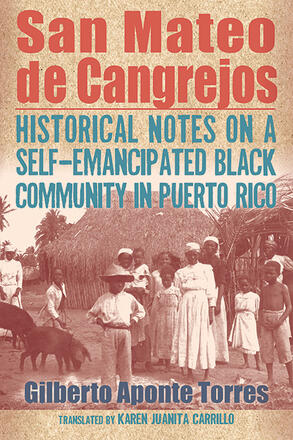
San Mateo de Cangrejos
Historical Notes on a Self-Emancipated Black Community in Puerto Rico
Alternative formats available from:
Establishes the central role of Afro-Puerto Ricans in the island's history and the creation of its capital city, San Juan.
Description
Originally published in Spanish in 1985 as part of a book series commissioned by Banco Popular, this slim volume makes an invaluable contribution to the history of Black people in Puerto Rico and the Caribbean more broadly. Today, San Mateo de Cangrejos is known as Santurce—a stylish district in the capital of San Juan, birthplace of Harlem Renaissance intellectual and collector Arturo Alfonso Schomburg, and home of the Santurce Cangrejeros for which baseball legends Roberto Clemente and Willie Mays once played. Gilberto Aponte Torres's brief yet transformative history is not about the feats of such "great men" but rather the "human foundations" of this unique municipality. San Mateo de Cangrejos was founded in the seventeenth century by cimarrones, or maroons, who were fleeing enslavement on neighboring islands and were later recognized as free by local authorities. Never losing sight of the significance of this fact, Aponte Torres details the religious life of Cangrejos, its economic and urban development, demography, military contributions, and eventual annexation by San Juan in 1862. Thoughtfully translated by Karen Juanita Carrillo, the English edition of San Mateo de Cangrejos includes photographs, a glossary, and other new features to help situate readers and further illuminate the deep roots of Black culture on the island.
Gilberto Aponte Torres is a researcher and teaches history in Puerto Rico. Karen Juanita Carrillo is the author of several books, including African American-Latino Relations in the 21st Century: When Cultures Collide, as well as the cofounder of AfroPresencia, a nonprofit organization dedicated to reporting on Blacks in the Caribbean and throughout North, Central, and South America.
Reviews
"…this book is an important read for those interested in Black Puerto Rican history, Caribbean maroon communities, and Black world-making in the Americas beyond slavery … Carrillo's translation is a valuable intervention in making this title available to English-speaking audiences." — H-Net Reviews (H-Caribbean)
"In translating this volume, Karen Juanita Carrillo makes available for an English-reading audience the history of a geographical site dedicated to Black liberation. It is an act of recovery: we glimpse the lives of Black human beings who endeavored to create and maintain a space released from hemispheric denials of their humanity." — from the foreword by Vanessa K. Valdés